Many home gardeners are turning to container gardening to grow their favourite veggies, fruits, flowers, and herbs. Containers can be used on a window, balcony, patio, or any other location where the circumstances are suitable for growing plants. Containers can be moved about to take advantage of shifting weather patterns, and their proximity to the home makes gardening and plant care a breeze. Container gardening can be a real challenge, but with the following advice, you can succeed.
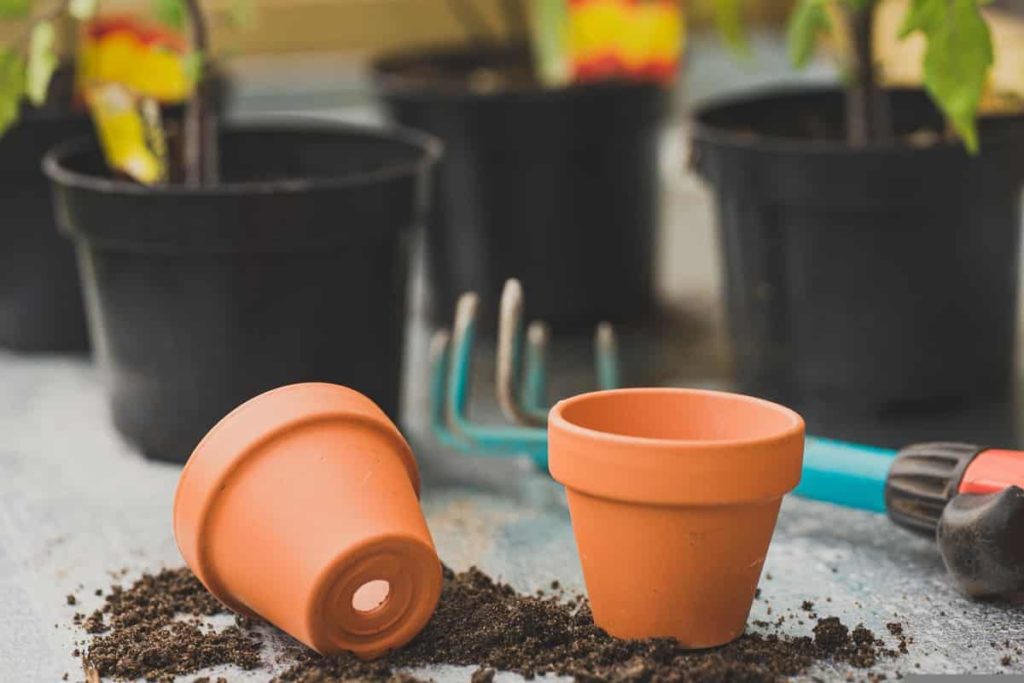
Wondering what are vegetable containers for gardening in Wisconsin? Want to know the best fall vegetables for container gardening in Wisconsin? What knowledge and things do you need to use for container gardening? If you have any of the above questions in mind, you’ve come to the right place.
In this article, we mentioned how to grow vegetables, fruits, herbs and flowers in containers in Wisconsin. Many cities in Wisconsin, such as Madison, Green Bay, Milwaukee, Appleton and Wisconsin Del, have emerged as focal points for container gardening. Let’s check out more details about Wisconsin container gardening below.
What are the USDA planting zones of Wisconsin?
The majority of the state of Wisconsin has a climate that is classified as warm-summer humid continental. At the same time, some areas in the south and southwest of the state have a hot summer humid continental climate. As a result, Wisconsin has four distinct seasons characterised by significant shifts in the state’s average rainfall and temperature, often occurring within very short time intervals.
The most northern region of the state has an annual temperature average of slightly under 40 degrees, whereas the rest has an annual temperature average of 55 degrees. Lake Michigan is largely to blame for many of the shifting circumstances that can be seen in particular places. Another element is the urban heat island effect, which helps keep some locations like Milwaukee colder in the spring and summer while insulating them from excessive cold in the winter months.
Wisconsin has ranged from 40 to 160 inches of snowfall each year, while the state averages 35 inches of rain. The annual precipitation total exceeds 120 days, with most of it falling at the higher elevations. An interactive planting zone map shows your planting zone in Wisconsin. This method is both fast and straightforward. Before beginning to create a garden, it is essential to understand the zone you are located within the state, which ranges from 3b to 5b.
Planting zones in Wisconsin help identify which kind of plants thrive best in the state and when to plant certain types of plants. The first and final frost dates are used to categorise growing zones. Consult with a nursery near you for guidance if you are unsure which of Wisconsin’s growth zones your location falls under. To be safe, always use hardy plants in your area or lower.
For instance, if you reside in zone 3b, plants classified for zones 1 through 3 should thrive OK throughout the year, and these are the plants that have the best chance of making it through the winter. Wisconsin is home to various flora and fauna, including plants, flowers, and edible veggies. Many wonderful options are available, including daylilies, poppies, blanket flowers, hostas, peonies, allium, and yarrow. Carrots, beets, lettuce, peas, chard, and radishes are some examples of vegetables that will do exceptionally well in this region.
Wisconsin container gardening: Steps to grow a decent container garden in Wisconsin
First, you have to choose an ideal container
Stability for upright growth can be achieved by selecting a large container to satisfy the requirements of a mature plant’s shoots and roots. For container gardening, recycled materials such as plastic buckets, broken wheelbarrows, wooden barrels, plastic garbage bags, and trash containers are all viable options. However, when it comes to watering, pots made of terra cotta, ceramic clay, or hypertufa require more care than plastic ones.
Containers that are white, tan, or another light hue absorb less heat than darker ones, which helps reduce root stress. Additionally, having appropriate drainage holes at the bottom and sides of the container is essential for draining excess water. Finally, putting containers on slightly raised bases, such as those made of bricks or paving stones, can further facilitate the free flow of any surplus water that has accumulated.
Containers need to have the appropriate depth and capacity to sustain the whole plant as it grows. Therefore, it is necessary to choose a container that is at least 2 gallons in capacity and between 4 and 6 inches deep for growing smaller plants such as onion sets, peas, leaf lettuce, garlic, radishes, cilantro, and spinach. The minimum container size required for larger plants such as eggplants, peppers, broccoli, tomatoes, cucumbers, and beans should be at least 5 gallons, and the depth should be between 8 and 12 inches.
How to choose an ideal location for your container plants?
Because most vegetable plants thrive best in a lot of sunlight, it is essential to position your pots to be exposed to at least six hours of direct sunshine each day. The ideal orientation for a building is either south or west. Put them in a location near to your home as possible so that you can easily tend to your plants.
Find a secured area for your pots to protect the plants you’re growing from the harsh, drying winds. Walls, fences, and hedges are all excellent settings; alternatively, you can attempt to screen the pots to lessen the impact of the wind. You can start a container garden on your window sills or balconies without a yard. Just make sure that the pots are firmly fastened so that they won’t fly off when the wind blows.
What type of soil/potting mix should you use for container gardening?
The majority of veggies do well when grown in commercial potting mixes. They are often composed of compost, peat moss, bark, perlite, or other materials analogous to these. They have low specific gravity, a high level of organic matter, and excellent drainage. Before buying a potting mix, read the label to determine its ingredients. Choose a product that has been pasteurised if it is an option to lower the probability of contracting an illness brought on by a soil-borne pathogen.
If the mix does not already include a slow-release fertiliser, you may want to think about adding one. There are three sizes of bagged potting mixes to choose from: 1, 2, or 2.8 cubic feet (7.5, 15 and 21 gallons, respectively). To ensure enough drainage, thoroughly fill your container with planting mix. Make sure there are no pebbles or broken pieces of pot sitting at the bottom of the pot. According to research, the optimum way for water to pass through a soil mix is in a continuous column.
The next step is planting your container plants
Now comes planting your container garden where you get your hands dirty. How you arrange your plants inside their containers and organise your container garden in its new location are opportunities for you to exercise your creativity. Of course, you’ll want to have your plants and their supplies close at hand, along with some water to wet the soil if necessary, a trowel, gloves, or even just your bare hands.
You could also create seasonal container gardens to add a little variety. Start by filling your container with your chosen soil until the bottom is completely covered. This should be between 3 and 6 inches deep, depending on how far down your plants’ roots go into the soil. This makes for a comfortable perch for the plant to rest on. Next, take your plants out of the pots they were kept in at the store, separate their roots, and brush off any extra soil. After that, put the plant inside the container.
When you combine different kinds of plants, you’ll have to experiment with different ways to arrange them in this section. If you are beginning your plant from seed, fill the container with soil up to 1 inch below the rim. Then, depending on the kind of plant you are growing and the size of your container, add anywhere from one to five seeds to each container.
After you have planted your container garden, you should give it some water to help the soil get wet and to assist the plants in becoming established. Then, after giving your plants a little opportunity to recuperate, you can proceed to use your imagination while placing your container garden in the appropriate spot.
How to water container plants?
The most challenging aspect of planting in containers is keeping the soil moist. The earth dries up more rapidly in containers than on the ground. Choose the biggest container you can locate so that there is a greater volume of soil to store moisture. This will help your plant thrive. You can also put a pot inside of another pot to prevent the heat from the sun from burning the soil on the surface of the container and destroying the plant.
If you combine your containers, it will be much simpler to water them, and the containers in the back will be protected from the sun by the ones in front. Using containers that water themselves can help ease caring for potted plants, which regularly need watering. They do this by placing a reservoir under a grid covered with dirt.
This allows the plants to get more water. You don’t have to do it every day when it comes to watering plants, but you should keep the reservoir filled. Another method for conserving water is to apply mulch over bare soil to limit the rate at which moisture evaporates.
Feed your container plants
When it comes time to plant, work a slow-release fertiliser into the soil. Then, in the middle of the growing season, you should start fertilising with a liquid feed—repeat application every two to three weeks. Plants grown in containers need more fertiliser than those grown in the ground since they are watered regularly. In addition, topsoil has a better capacity for holding fertiliser than potting mixtures do. Be sure to follow the instructions for the slow-release fertiliser and dilute liquid fertilisers somewhat.
How to manage diseases and pests in container gardening?
Planting vegetables in containers leaves them open to the same kinds of pests and diseases that can affect other plants. Problems may be avoided by selecting disease-resistant kinds and keeping the containers stored clean. Check your plants to see if they have any insects. If you need to get rid of insects or other pests, you should give natural cures a go before turning to store-bought poisons.
You can use soapy water or blend one onion, two to three hot peppers, and two to three finely chopped garlic in a blender; add the mixture to one gallon of water, add a few sprays of dish detergent, let it set overnight, shake it up, and apply it using a pump sprayer.
What are the container vegetables that can be grown in Wisconsin?
Many vegetables can be grown in containers in Wisconsin, like beans, kale, tomatoes, bell peppers, carrots, broccoli, peas, spinach, and other similar vegetables.
Tomatoes: Tomatoes are unquestionably one of the happiest crops to grow in a container. Each plant produces roughly 10 pounds of harvest in a single year! A roof or a sunny window sill is ideal for growing tomatoes. Remember to water them regularly.
In case you missed it: The Best Fertilizer for Tomatoes in Pots
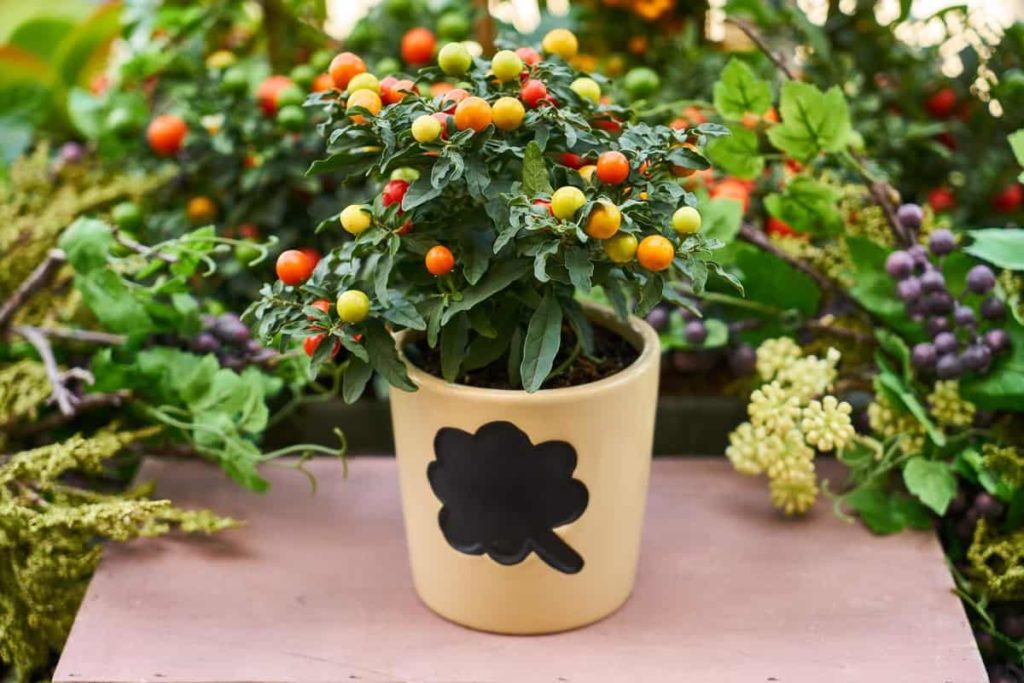
Beans: Beautiful foliage and flowers make green beans ideal for balconies and patios. A minimum of 12 inches of pot depth is required. Growing beans in pots can be done in one of two ways. You can grow a bushy bean variety in a container or a climbing bean type on a trellis, which is equally successful.
Carrots: Choose healthy, deep soil with good drainage. During the growth season, don’t compress or flood soils. Extra moisture causes forked roots, lowering quality. First-emerging carrots are vulnerable to wind damage. After planting, sprinkle oat seed to protect young seedlings.
Cucumbers: Cucumbers can be grown in containers despite their spreading vines. Choosing a small variety and guiding the vines on a trellis is the most important step. When the crop grows high, it takes up less space, making harvesting simple. Growing them in pots is an amazing option when it comes to the additional heat cucumbers want.
Peppers: You’ll need around 2 or 3 ripe green peppers. Allow them to air-dry for a few days after cutting them open. The seeds take roughly a week to germinate. Next, transplant each plant into a larger pot or grow bag with around ten leaves.
In case you missed it: Growing Peppers in Pots from Seed, and Cuttings
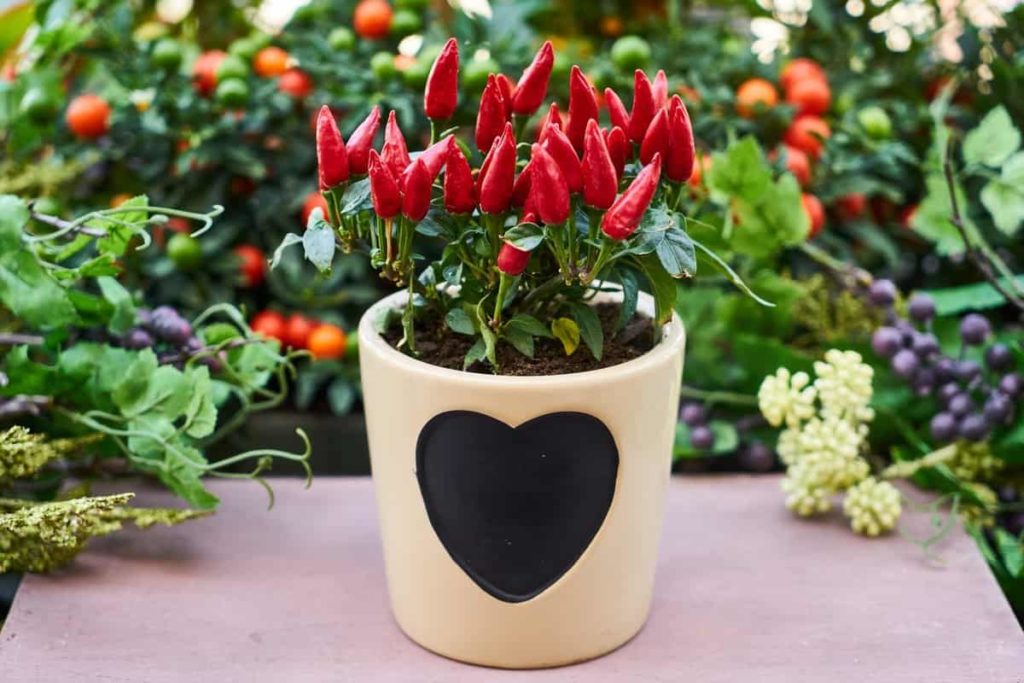
What are the container fruits that can be grown in Wisconsin?
Many fruits can be grown in containers in Wisconsin, like apples, figs, cherries, strawberries, gooseberries, raspberries, plums, peaches, and other fruits.
Apples: Apples can thrive in pots thanks to tiny rootstocks. A well-ventilated shaded spot is ideal for growing them. For those with limited space, pick a self-fertile variety or a “family tree,” which is a grafted collection of multiple apple tree kinds. The size of the pot required is 45-50cm wide.
Blueberries: Acidic soil is simple to provide in a container for blueberries. They also have beautiful fruits, flowers, and fall foliage that is a sight. Place them in a shady area and hydrate them with rainwater instead of tap water. Make sure the mature fruits are protected from birds.
Cherries: Cherry trees provide many spring flowers, summer fruit, and frequently vibrant fall leaf colour. In contrast to sour kinds, such as Morello cherry, which prefer a shady environment, sweet varieties require more sunlight. It’s essential to water them well the first year and throughout dry periods because of their shallow root systems.
Peach: If you want your peach trees to yield fruit, make sure you plant them in a sunny, protected location. When the tree’s flowers begin to bloom, cover it with fleece to keep them safe.
In case you missed it: Best Fertilizer for Peach Trees: Homemade, Organic, Compost, NPK, Liquid, How and When to Apply

Strawberries: Strawberries are the ideal fruit to grow in containers. Plant them in the late summer or the beginning of fall, and make sure they have a sunny spot. It is essential to check that the crown is level with the top of the compost.
What are the container herbs that can be grown in Wisconsin?
Oregano, basil, mint, thyme, parsley, rosemary, lavender, and many more herbs can be grown successfully in pots in Wisconsin.
Parsley: Plant treated seed or transplants at the end of April. Do not plant too early to avoid exposing young seedlings to temperatures below 55°F for a week or longer. “Bolting” can be caused as a result. Use rich and well-drained soil for planting.
Mint: Good potting soils are best for growing Wisconsin mint. Watering is recommended for mint because of its shallow root system. However, it is possible to grow mint in a container as a year-round plant by using cuttings from the previous year.
Rosemary: With full sun and well-drained soil, rosemary flourishes. Make sure the roots of this plant don’t become wet and prevent overwatering. As a warm-weather plant, rosemary does well in Wisconsin’s dry, sunny climate. As a Mediterranean staple, rosemary is a must-have ingredient.
In case you missed it: Growing Organic Rosemary in Containers, and Pots
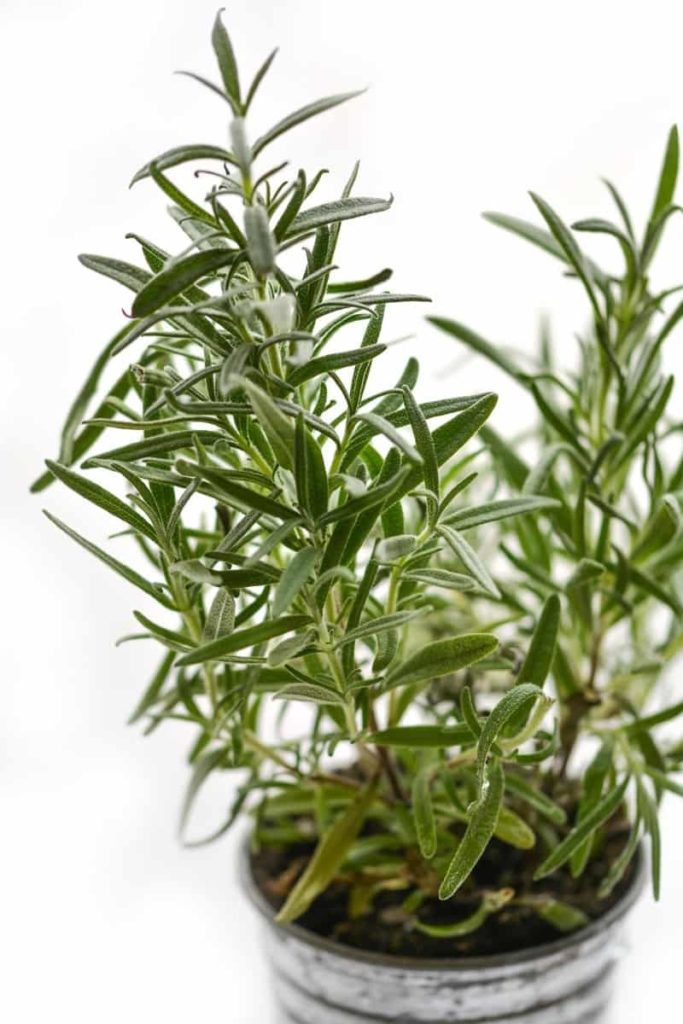
Basil: Make sure your basil plants get enough sunshine and warmth. The roots of this plant must be kept dry by well-draining soil. Drink one glass of water a day, particularly first thing in the morning, to avoid exposure to the sun. Basil, a common ingredient in Italian cuisine, comes in a wide variety of flavours and colours. Combine basil with other herbs in five-gallon pots, or try growing a more compact variety in a larger container.
Thyme: Thyme thrives in well-drained soil and full sunshine. The roots of thyme, like rosemary, may rot if they are always moist, so make sure your plants have good drainage and don’t overwater. Thyme grows well in the cold environment of Wisconsin.
What are the container flowers that can be grown in Wisconsin?
Many flowers can be grown in containers in Wisconsin, like coneflowers, petunias, daisies, dahlias, geraniums, tulips, marigolds, lilies, and other flowers.
Geranium: Geraniums are attractive container garden flowers of many kinds. Some say they’re overdone. From late spring to summer, these 12-18″ flowers bloom. Put them someplace sunny for all-season colour.
In case you missed it: Canada Container Gardening: How to Start with Vegetables, Fruits, Flowers, and Herbs
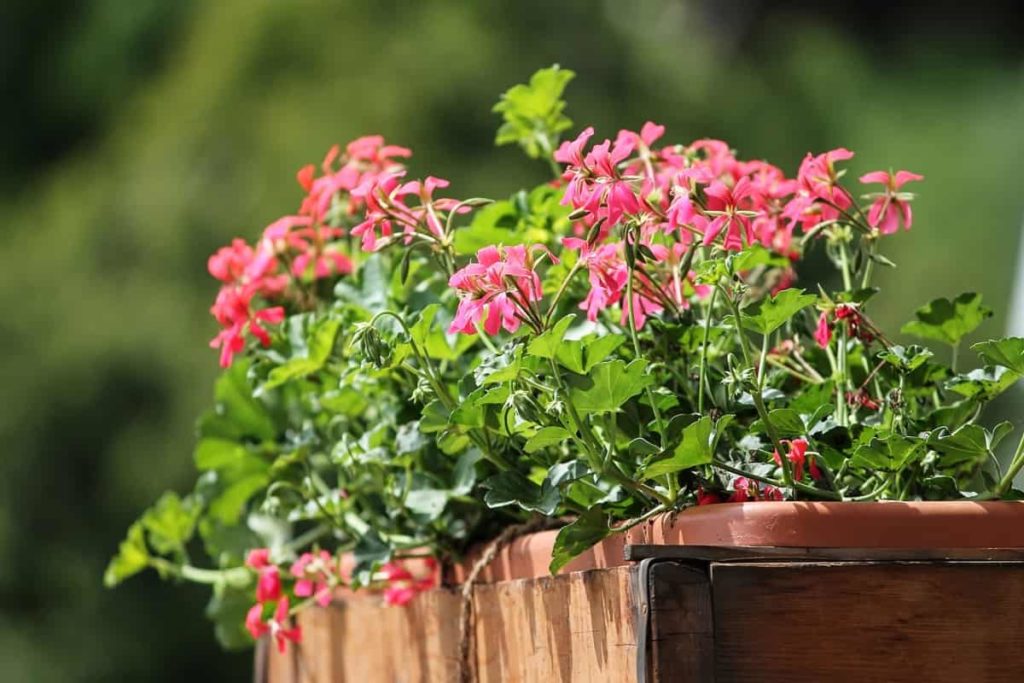
Pansies: Pansies are attractive winter and early spring container flowers due to their cold resistance. Most are multicoloured. Orange, dark red, light blue, pale yellow, or purple. 6-12″ tall, they’re ideal for shallow basins or mixed plantings. By midsummer, they’re usually done. Once the weather heats up, take them out of the sun to prolong their life.
Dahlia: The dahlia is a lovely container flower. Purple, pink, yellow, and white are available colours. They are 3-4′ tall and like full sun. You can keep the tubers throughout winter and transplant them in spring.
Daisies: Daisies are an excellent choice for container gardening. Every colour you can imagine is available. These annuals like full sun and warm weather are so popular. While most types are about 6-12 inches tall, a few can reach 18 inches.
Chamomile: Chamomile is a white-petaled flower that makes a delicious herbal tea. Get German chamomile for your balcony garden, not Roman chamomile. This 9-inch plant can grow to 2 feet tall and 2 feet wide. Chamomile flowers are 1 inch wide and resemble daisies.
- Flower Garden Designs and Layouts for Beginners
- Planting and Spacing Techniques in Papaya: A Beginner’s Guide
- Growing Gold: Essential Techniques for Planting Pineapples
- How to Make Kalanchoe Plant Bushy: Home Remedies and Solutions
- 11 Reasons Why Your Gardenia is Not Blooming: Home Remedies and Solutions
- Eco Elegance: The Guide to Designing a Drought-Tolerant Landscape
- Gardening on a Slope: Strategies for Hillside Landscaping
- Nourish and Flourish: Top Organic Mulches for Thriving House Plants
- Everything You Want to Know about Indian Mogra Flower: Discover Uses and Growing
- Green Thumb Success: Expert Tips for Cultivating Greenhouse Pumpkins All Year Round
- Maximize Growth & Flavor: The Ultimate Guide to Companion Planting in Herb Gardens
- How to Control Rhododendron Problems Naturally: Home Remedies and Organic Ways to Fix Them
- Natural Magic: The Remarkable Benefits of Cinnamon for Plants
- Best Steps to Revive Dying Tulip with Natural and Organic Treatment
- 10 Reasons Why Your Angel Trumpet is Not Blooming: Remedies and Treatment
- How to Fix Periwinkle Leaf and Flower-Related Problems: Natural Remedies and Solutions
- How to Fix Zinnias Leaf and Flower Problems: Discover Natural and Home Remedies
- Organic Steps to Induce Lemon Tree Flowers: A Comprehensive Guide
- Bloom Booster: Crafting the Perfect Homemade Bougainvillea Fertilizer
- Optimizing Growth: A Guide to Applying NPK Fertilizer for Potted Plants
- 10 Best Homemade Fertilizers for Rubber Plant: DIY Recipes and Application Method
- How to Boost Female Pumpkin Flowers: Effective Steps for More Flowers and High Yields
- Transform Your Indoor Garden: Top Benefits of Pink Salt for Houseplants
- 10 Best Homemade Fertilizers for Peacock Plants (Calathea): Easy DIY Guide
- Unlock Blooms: 9 Reasons Why Your Potted Chrysanthemum is Not Blooming
- 8 Reasons Why Your Potted Hibiscus is Not Blooming: Fix it with Simple Solutions
- Unlock Blooms: 9 Key Reasons Your Potted Frangipani Won’t Flower
- 10 Reasons Why Is My Ice Plant Not Blooming: Remedies and Treatment
- 10 Reasons Why My Potted Hydrangea Not Blooming: Treatment and Remedies
- 10 Reasons Why is My Wisteria Not Blooming: Remedies and Treatment
- 10 Reasons Why is My Goldfish Plant Not Blooming: Remedies and Treatment
- Maximize Your Space: Ultimate Guide to Balcony Gardening with Grow Bags
- 10 Reasons Why Your Iris is Not Blooming: Remedies and Treatment
- 10 Reasons Why Your Anthurium Plant is Not Blooming: Treatment and Remedies
- 10 Reasons Why Your Aquaponic Plants Are Not Flowering: Remedies and Treatment
- 10 Reasons Why Your Agapanthus is Not Flowering: Remedies and Treatment